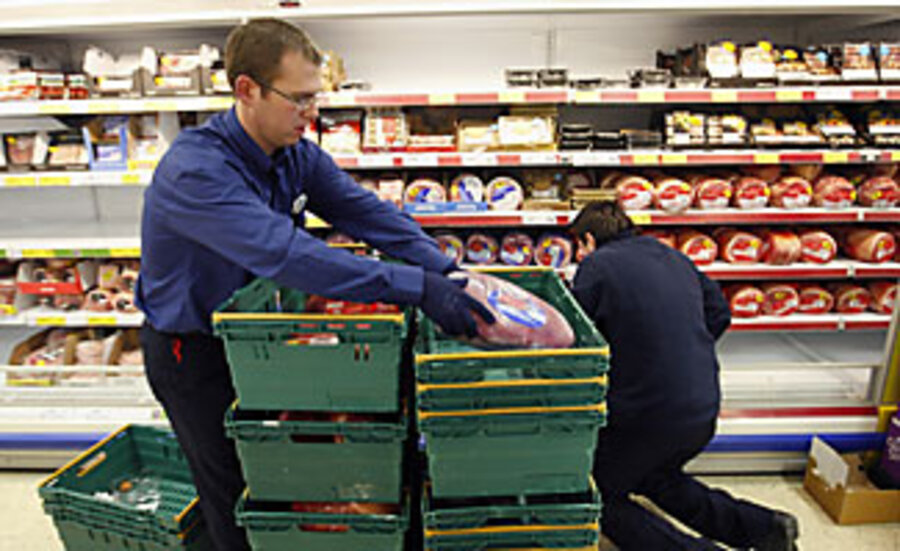Irish pork recovering slowly after feed scare
Loading...
| Dublin, Ireland
Hams returned to racks and shelves in time for the traditional Christmas dinner following a recall of all pork products, announced by the Food Safety Authority of Ireland on Dec. 6. The decision had stripped butchers and supermarkets bare when dioxins – 80 to 200 times the permitted level – were found in samples of Irish pork traced to tainted animal feed.
Although business is resuming, the recall has dented consumer confidence in the pork sector, which is centered on large-scale producers. As the government moved to protect these producers and their export market, those hit hardest were the artisan operators, whose animals were never in contact with the contaminated feed.
In spite of their commitment to "traceable" organic practices, these small producers fear their farms will continue to suffer from the aftershocks of the crisis.
"When the contamination was discovered, the response should have been 'How do we contain it?'" says John McKenna, coauthor of the Bridgestone Guides to Irish Food. "From the beginning there should have been an exemption for anyone using organic pork or anyone who could prove their traceability. The recall of all products was solely in the interests of the big companies responsible for Ireland's food exports."
The dioxins that contaminated a relatively small amount of pig feed are believed to have come from oil used on machines that dry the feed. The feed was found to have been used at 56 farms. No health problems have been traced to eating pigs that might have been raised on the tainted feed. Farmers say the recall has been devastating. When it was announced, markets had no choice but remove all pork, says Niamh Boylan, spokeswoman for Irish supermarket Superquinn.
"Obviously, when the directive was given to take products off the shelves there was no question that we wouldn't do it," Ms. Boylan says. "But we use a small number of suppliers, and everything under our label is Irish and traceable."
One of those suppliers is James Brett, of Sunglen Farm in County Kilkenny, whose family-run operation includes a food-mill and processing unit. "We also breed our own pigs, so we know where every pig comes from, what they eat, and when they were slaughtered," he says. Nevertheless, this full traceability counted for nothing, and although his products were the first back on Superquinn's shelves, he still had to lay off staff for a number of days.
An even smaller producer is the family-run Caherbeg Free-Range Pork, in County Cork, where owner Avril Allshire's young daughters sometimes look after the animals, which live as naturally as possible in fields at the back of their house.
"All our Christmas hams were sitting in the cold room and we had people ringing with orders, but we could do nothing [during the recall]," she says, adding that she had to follow the same procedures as the biggest processing plants to have her meat re-released on the market.
The episode revealed the failure of the traceability structure for the pork industry. In contrast, Irish beef became traceable from "farm-to-fork" after Britain's bovine spongiform encephalopathy crisis – or "Mad Cow" disease – in the 1990s and the foot-and-mouth disease outbreak in 2001 (although neither took hold in Ireland). Consumers wanted to know the origin of their meat and the food industry responded. Now the name and sometimes even the photograph of the farmer who raised the cattle can be found on meat packaging here.
But that's more difficult in the pig sector, according to Pat O'Keefe, deputy editor of the Irish Farmers Journal.
"With beef, an animal goes into the plant, and the meat comes out in a supermarket pack," he says. "What happens in the pig sector is that slaughtering plants kill the pigs and then send a half or a quarter carcass to secondary processors. There it might be cured and that ham sent to a frozen pizza producer. The more the meat travels the less traceable it becomes."
More intensive forms of production – with a few pig farmers processing massive amounts of animals – leave the sector vulnerable to a crisis such as this.
"The impact of one mistake is massive," says Mr. McKenna. "In this case there was a scare that, according to the European Food Safety Authority, has posed no risk to human health, yet the entire episode is going to cost the tax-payer €180 million [$250 million] in compensation to pig producers."
An upturn for the organic and artisan sector seems unlikely in the short term, according to Sinead Kerr, an artisan food technologist with Teagasc, the Irish Agriculture and Food Development Authority. She helps small producers negotiate the strict health regulations and procedures when setting up a business.
"The artisan producers wouldn't have the animals to fill an immediate shift in the market, but they will benefit in the long term," she says, adding that because of the recession, consumer choice will also be influenced by price.
Ms. Allshire, the County Cork producer, also doesn't see a sudden shift to artisan producers like herself. "Those who want quality food will always look for quality food, and those that want cheap food will always want cheap food," she says.
Instead, she and others predict a more gradual shift to organic products.
"It's the way of the future," says Mr. Brett, whose family-run operation has retained its small-scale ethos as it has expanded over the past 20 years. Having written about the sector for nearly 30 years, McKenna sees more confidence in the artisan producers and a second generation who are more commercially savvy.
"Their parents weren't [commercial] at all," he says. "They were idealistic, but the children have found a niche market and are prepared to pay extra. It's not like buying a luxury-branded good, it's buying something you trust."



